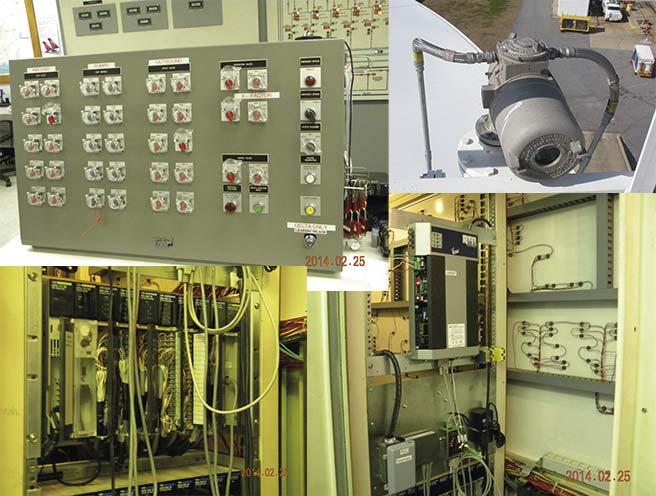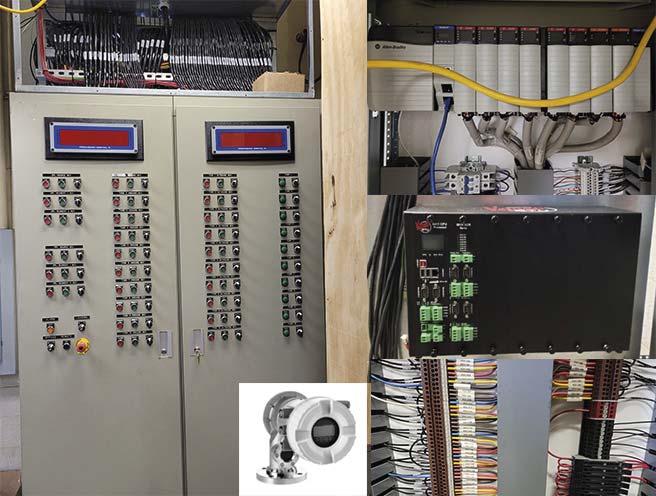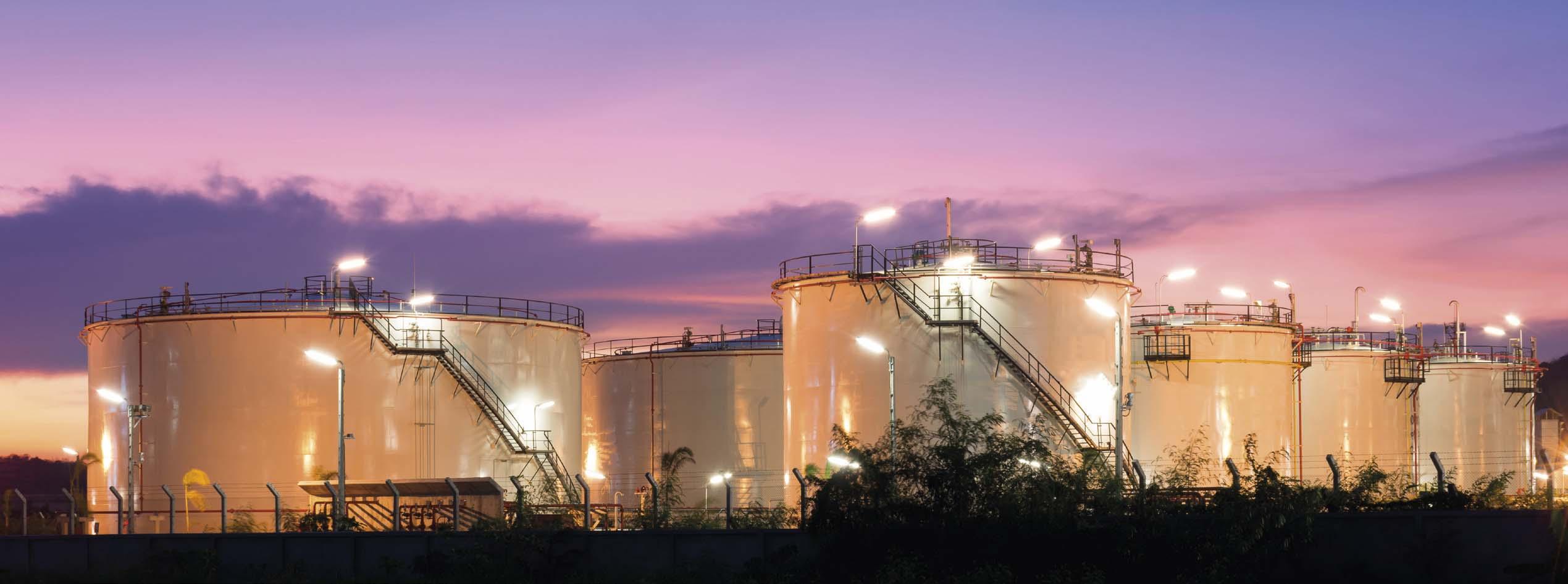
8 minute read
The sky’s the limit









Adam Wishall, Varec Inc.,
USA, explains how recent updates have helped to improve automation and control functionality for a major fuel farm at the Hartsfield-Jackson Atlanta International Airport.


FSM Group is a North American professional services group specialising in aviation fuel. Some of the group’s key offerings include into-plane services (the refuelling or supply of fuel to an aircraft), fuel farm maintenance and operations, fuel logistics, and ground support equipment services. FSM Group has been managing the Delta Air Lines fuel farm at the Hartsfi eld–Jackson
Atlanta International Airport in Georgia, US, since October 2020. Prior to the change in management, Delta managed its own fuel farm. Over the past few years, signifi cant upgrades have been made across the fuel farm to replace ageing equipment, as well as to improve the electrical infrastructure and upgrade software and systems. Since 2008,
Varec’s FuelsManager® suite of software applications and 8130 remote terminal unit (RTU) have been an integral component of the legacy fuel management system at the Delta fuel farm. As part of the most recent
updates, Varec provided its airport fuel control system (AFCS), which included the control cabinet and operator station, an 8810 RTU, as well as a FuelsManager software upgrade. These enhancements provided signifi cant improvements to various automation and control functionality across the fuel farm.
Situation
The fuel farm for Delta Air Lines was originally built in the 1970s, and many of the systems put in place over 40 years ago to help manage the day-to-day operations were still in place just a few years ago. The long-time general manager for the fuel farm, formerly a Delta employee and now working for FSM Group, began designing the plans for a major upgrade across the entire fuel farm nearly a decade ago.
The control panel was over 40 years old, analogue, very large (7 ft x 14 ft x 3 ft), and took up too much space in the control room. The terminal manager wanted a new control panel that included a cabinet where other parts of the system could be stored in order to streamline space. He also wanted a modern programmable logic controller (PLC) because the current PLC was no longer functioning effi ciently as it was an older system with outdated technology that was diffi cult to update and maintain.
The biggest PLC issue revolved around managing pumps and valves during peak departure times that would drive a high spike in fuel demand. During these peaks – where there could be 20 or more planes on the ground being fuelled at the same time – the hydrant pump pressure would drop too low. The system would respond by turning on more pumps. However, before the entire system could recalibrate each time an additional pump was brought online, the PLC would trigger another pump to start. These premature starts would cause the pressure to rise too high. It had become a common occurrence that the pressure would reach critical high levels during these peak periods, which triggered an emergency fuel shut off (ESFO) and delayed aircraft fuelling. To try and mitigate this problem, the fuel farm operators had to spend a lot of time manually managing the pumps during peak periods. In doing so, they were spending less time performing the day-to-day maintenance checks on the tanks.
There were other updates already completed, underway or still pending as a part of the large tank farm upgrade project, such as replacing the aged communication and electrical wires and cables, updating the computers and servers, upgrading the RTU, and updating the FuelsManager software. Several vendors were involved at different stages of the project, working collaboratively on their respective areas of expertise.
Solution
After several consultations with engineers on some of these issues that the facility was facing, the general manager selected Varec for multiple aspects of the fuel farm upgrade. The biggest component was deploying Varec’s AFCS. Key physical components of the system included a control cabinet that housed the PLC and the manual control panel (MCP) on the doors. The 8810 RTU, the new tank gauging interface, was also housed in the cabinet. The new PLC had advanced logic to provide better automation and control for the fuel farm’s pumps and valves.
The PLC logic is the key automation component of AFCS. It was designed to operate using the fi rst-in, fi rst-off (FiFo) smart pump sequencing instead of the traditional lead lag method. With FiFo, run times would be better distributed across the pumps, eliminating quick starts and stops for some pumps and long run times for others. This results in a more optimal performance and reduces the wear and tear on the fi rst few pumps in sequence. Now, as pumps are brought online to meet the fuel demand, the pump that has been running the longest will be shut off as demand decreases. Another key component of AFCS is to base the automation logic on both pressure and fl ow to determine when to start and stop pumps.
FSM Group also selected some of Varec’s other products, which are not required for AFCS. The new tank gauging communication interface – the 8810 RTU – replaced the legacy 8130 RTU. The interface is Ethernet-enabled, uses the OPC Unifi ed Architecture (UA) communication server, and supports up to six modules, 24 channels and 400 tanks. The existing servo gauges were replaced with NMS81 Servo Gauges. This device upgrade was not a part of the original project, but FSM Group decided to make the change during the project to eliminate performance issues and ensure long-term technology compatibility with the other enhancements. Lastly, the facility’s FuelsManager Inventory Management, Accounting and Movement Tracking modules were also upgraded as a part of the technology refresh to the latest operating systems.
Results


Figure 1. Previous control panel, PLC, servo gauge, and 8130 RTU (left), and new control cabinet, PLC, 8810 RTU, interior wiring/cables, and NMS81 Servo Gauge (right). Benefi ts of the new system were realised almost immediately. The new control panel and PLC streamlined operations. The need for manual intervention to help manage the pumps was completely eliminated. With the MCP built into the front of the cabinet, operators can easily visualise how things are running at any moment in time.
At a glance, they can see outgoing system pressure and fl ow, which tank(s) are actively receiving from the pipeline, which tank(s) are issuing to an aircraft, and the number of pumps currently running. In the past, this visualisation was only available at computer work stations in the control room. Operators can also individually route control of each device to the automated system or easily control them manually from the panel, providing an operations backup control and monitoring workstation. MCP also serves as an automation system back up if the primary control station software or the PLC were to stop working.
The new servo gauges helped eliminate another manual process. Previously, operators would manually take a density
reading each night from each gauge, and input those readings into the system. It could take up to 45 minutes per tank to complete this task. Now, standard and real-time density data captured in the NMS81 Servo Gauges automatically updates FuelsManager, freeing up operators to focus on other tasks. While FuelsManager had been installed for over a decade, the recent upgrades have refi ned some of the tracking, reporting, and reconciliation processes. Through the standard reports available, operators can effectively manage inventory levels to understand gross and net, track and Figure 2. The Delta Air Lines fuel farm at the Hartsfield–Jackson Atlanta reconcile gains and losses, and manage days International Airport. of supply, a critical metric to know at all times. The facility also tracks and records movements with FuelsManager. This feature is used as an additional check and balance within the system. Movements are tracked from the pipeline into the tanks and out of the tanks through each allocation transaction. With the standard pipeline report, they know when each valve was opened, which tank the fuel went into, and the start and stop times for each transaction. They are also able to compare what the pipeline says was sent to what was actually received to determine if there are variances. Since all of the upgrades have been in place, there have not been any variances outside of tolerance. Fuel receipts and disbursements are extremely accurate, even down to the into-plane services.
Keep Updated

Keep up to date with Keep up to date with us to hear the latest us to hear the latest oil and gas news storage news












